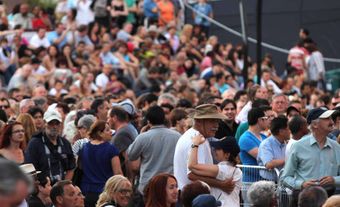Saint-Hyacinthe
Saint-Hyacinthe, Que. A city in Quebec on the Yamaska River, some 50 km east of Montreal. Founded in 1748, a municipality in 1849, and a town in 1857, it was named after the patron saint of Jacques-Hyacinthe-Simon Delorme, the local seigneur. In 1990 it was an industrial centre with a metropolitan population of 40,000.
The Séminaire de Saint-Hyacinthe was founded in 1811 and soon began to give courses in music; a certain Cléophas Larue is said to have taught the young Calixa Lavallée when he attended that institution. Lavallée's father, Augustin, had settled in the town around 1848, working as a string-instrument maker and as a manufacturer of organ pipes in Joseph Casavant's modest factory, in addition to conducting an amateur band. At 10 Calixa was the regular organist of Notre-Dame-du-Rosaire Church. Télesphore Urbain was a later incumbent, followed by Conrad Letendre and Ferrier Chartier, among others.
Music was taught at the convent of the Sisters of the Sacred Heart, founded in 1842, as well as at the convents of the Sisters of the Presentation of Mary (founded 1858) and the Sisters of St Joseph. Saint-Hyacinthe became known around the world for Casavant Frères, the organ manufacturers founded in 1879 by Joseph's sons, Samuel and Claver Casavant, both born there.
One of the leading figures of the town was Léon Ringuet, who arrived in 1880 to conduct the Société philharmonique, a concert band founded the preceding year. Ringuet was also the organist-choirmaster at the cathedral and a teacher. One of his pupils, L.-J. Oscar Fontaine, was assistant organist at the cathedral before moving to the USA in 1904. In 1990 the concert band was under the direction of Robert Pelletier.
Conrad Letendre and Charles-Émile Gadbois were two prominent residents born early in the 20th century. In addition to being organist at Notre-Dame-du-Rosaire, Letendre taught at the seminary and the academy. Bernard Lagacé, born in Saint-Hyacinthe, was his pupil, as was Gaston Arel, the organist at the cathedral in 1945. Letendre also collaborated with Gadbois in his publishing enterprise La Bonne Chanson, founded in Saint-Hyacinthe in 1937.
It was in Saint-Hyacinthe that the JMC (YMC) originated in 1949. The town had several concert bands such as the Patro, founded in 1906, and choirs such as the Ménestreles and Gloria Laus, as well as the Variétés canadiennes (1945- ). For a long time concerts were held in the hall of the seminary and at the Corona cinema. The Bourgchemin Cegep has a modern 800-seat hall, the Salle Léon-Ringuet.
Saint-Hyacinthe is the birthplace of Willie Lamothe, Louis-Philippe Laurendeau, Damis Paul, the organists Paul Vigeant and Denis Regnaud, the pianist and teacher Miville Bois, and the pianist-arranger-composer Gérald Locas. The town has spawned a number of pop music groups, including the Hou-Lops, the Sultans, and the Aristos. The firm Providence Organ Inc (which became Guilbault-Thérien Inc in 1979) was founded in 1946 in the suburb of Providence. The collections of the Société philharmonique and of Simone Turner, who was closely connected with the JMC movement, are held at the Société d'histoire régionale of Saint-Hyacinthe.

 Share on Facebook
Share on Facebook Share on X
Share on X Share by Email
Share by Email Share on Google Classroom
Share on Google Classroom

